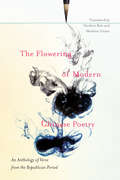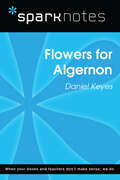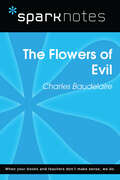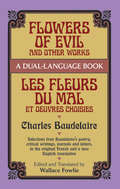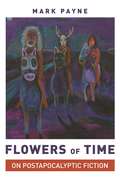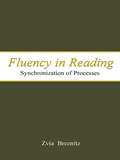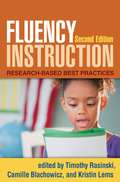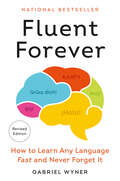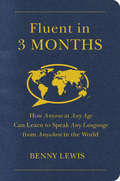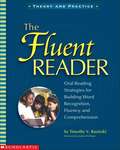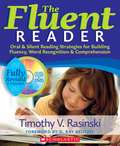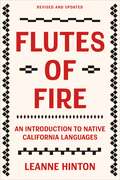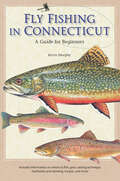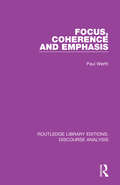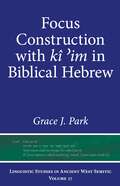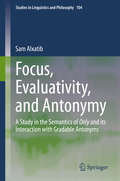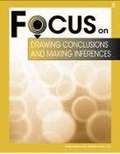- Table View
- List View
Florida Wonders Reading/Writing Companion: Units 3 - 4
by McGraw-Hill EducationNIMAC-sourced textbook <p>Grade 3
Florida Wonders Reading/Writing Companion: Units 1-2
by McGraw HillNIMAC-sourced textbook <p>Grade 3
The Flower Alphabet Book (Jerry Pallotta's Alphabet Books)
by Jerry PallottaRoses are red,Violets are blue...And they're only two of the flowers in this book of bright colors and delightful information. Young readers will be fascinated to find out what flower can be used to make a doll, which flower flavors tea, and which flower farmers feed to chickens.Author Jerry Pallotta and illustrator Leslie Evans have collaborated to produce a stunning bouquet of words and pictures about the world of flowers–one of nature's most beautiful gifts.
The Flowering of Modern Chinese Poetry: An Anthology of Verse from the Republican Period
by Herbert Batt Sheldon ZitnerThe May Fourth Movement launched an era of turmoil and transformation in China, as Western ideas and education encroached on the Confucian traditions at the root of Chinese society. The Republican period (1919–49) witnessed an outpouring of poetry in a form and style new to China, written in the common people’s language, baihua ("plain speech"). The New Poetry broke with the centuries-old tradition of classical poetry and its intricate forms, and the rise of China’s modern poetry reflects the rise of modern China. The Flowering of Modern Chinese Poetry presents English translations of over 250 poems by fifty poets, including a rich selection of poetry by women writers, to provide a nuanced picture of the rapid development of vernacular verse in China from its emergence during the May Fourth Movement, through the years of the Japanese invasion, to the Communist victory in the Civil War in 1949. Michel Hockx introduces the historical and literary contexts of the various schools of vernacular poetry that developed throughout the period – the pioneers, formalists, symbolists, "peasants and soldiers" poets, and Shanghai poets of the late 1940s. Each selection of verse begins with a biographical sketch of the author’s life and literary career, including their roles in the Civil War and Japanese occupation. Introducing English readers to master poets who are virtually unknown to Western audiences, this anthology presents a collection of verse written in an age of struggle that attests to the courage, sensitivity, and imagination of the Chinese people.
Flowers for Algernon (SparkNotes Literature Guide Series)
by SparkNotesFlowers for Algernon (SparkNotes Literature Guide) by Daniel Keyes Making the reading experience fun! Created by Harvard students for students everywhere, SparkNotes is a new breed of study guide: smarter, better, faster.Geared to what today's students need to know, SparkNotes provides:chapter-by-chapter analysis explanations of key themes, motifs, and symbols a review quiz and essay topics Lively and accessible, these guides are perfect for late-night studying and writing papers.
The Flowers of Evil (SparkNotes Literature Guide Series)
by SparkNotesThe Flowers of Evil (SparkNotes Literature Guide) by Charles Baudelaire Making the reading experience fun! Created by Harvard students for students everywhere, SparkNotes is a new breed of study guide: smarter, better, faster.Geared to what today's students need to know, SparkNotes provides:chapter-by-chapter analysis explanations of key themes, motifs, and symbols a review quiz and essay topics Lively and accessible, these guides are perfect for late-night studying and writing papers.
Flowers of Evil and Other Works: A Dual-Language Book (Dover Dual Language French Ser.)
by Charles BaudelaireWhen Flowers of Evil was first published in 1857, the book almost immediately became the subject of an obscenity trial, and for several generations afterward its themes of eroticism, lesbianism, revolt and decay earned the author a reputation for depravity and morbidity. It was not until 1949 that the French courts removed the ban originally imposed on Baudelaire's masterpiece.Today, Flowers of Evil is regarded as the poet's greatest work and perhaps the most influential book of French poetry ever written. In assessing Baudelaire's importance in literature, Wallace Fowlie, distinguished scholar, critic and Baudelaire specialist, describes him as "the poet and thinker of our age, of what we like to call modernity."This handsome dual-language edition combines Flowers of Evil with a selection of the poet's other significant compositions, including prose poems from Spleen of Paris, a poignant collection reflecting Baudelaire's pessimism towards the teeming city and his compassion for its less successful inhabitants. Readers will also find critical essays on art, music and literature, including a discussion of Edgar Allan Poe's poetry; and Baudelaire's personal letters to his mother and female acquaintances. Edited and translated by Professor Fowlie, this authoritative edition contains excellent line-by-line English translations with the original French text on the facing pages.Students of French language and literature as well as poetry lovers with some knowledge of French will welcome this volume by one of the greatest European poets of the 19th century.
Flowers of Time: On Postapocalyptic Fiction
by Professor Mark PayneAn exploration of postapocalyptic fiction, from antiquity to today, and its connections to political theory and other literary genresThe literary lineage of postapocalyptic fiction—stories set after civilization’s destruction—is a long one, spanning the biblical tale of Noah and Hesiod’s Works and Days to the works of Mary Shelley, Octavia Butler, Cormac McCarthy, and many others. Traveling from antiquity to the present, Flowers of Time reveals how postapocalyptic fiction differs from other genres—pastoral poetry, science fiction, and the maroon narrative—that also explore human capabilities beyond the constraints of civilization. Mark Payne places postapocalyptic fiction into conversation with such theorists as Aristotle, Jean-Jacques Rousseau, Claude Lévi-Strauss, and Carl Schmitt, illustrating how the genre functions as political theory in fictional form.Payne shows that rather than argue for a particular way of life, postapocalyptic literature reveals what it would be like to inhabit that life. He considers the genre’s appeal in our own historical moment, contending that this fiction is the pastoral of our time. Whereas the pastoralist and the maroon could escape to real-world hills and fashion their own versions of freedom, on a fully owned and occupied Earth, only an apocalyptic event can create a space where such freedoms are feasible once again.Flowers of Time looks at how fictional narratives set after the world’s devastation represent new conditions and possibilities for life and humanity.
Fluency in Reading: Synchronization of Processes
by Zvia BreznitzThis is the first book to examine in-depth the crucial role of the speed of information processing in the brain in determining reading fluency in both normal and dyslexic readers.Part I explains fluency in reading from both traditional and modern perspectives. Fluency has historically been viewed as the outcome of other reading-related factors and has often been seen as a convenient measure of reading skills. This book, however, argues that fluency has a strong impact on other aspects of reading and plays a central role in the entire reading process.Part II deals with the determinants of reading fluency. Chief among these is the speed of information processing in the brain. Using both behavioral and electrophysiological evidence, the book systematically examines the features of processing speed in the various brain systems involved in reading: visual-orthographic, auditory-phonological, and semantic and shows how speed of processing affects fluency in reading.Part III deals with the complex issues of cross-modal integration and specifically with the need for effective synchronization of the brain processes involved in reading. It puts forward the Synchronization Hypothesis and discusses the role of the Asynchrony Phenomenon as a major factor in dyslexia. Finally, it summarizes research on manipulating reading rate by means of the Acceleration method, providing evidence for a possible intervention aimed at reducing Asynchrony.Key features of this outstanding new book include:*Expanded View of Fluency. Reading fluency is seen as both a dependent and an independent Variable. Currently available books focus on reading rate solely as the outcome of other factors whereas this volume stresses that it is both an outcome and a cause.*Information Processing Focus. Fluency itself is determined to a large extent by a more general factor, namely, speed of processing in the brain. The book presents wide-ranging evidence for individual differences in speed of processing across many subpopulations.*Brain Synchronization Focus. The book posits a new theory arguing that effective reading requires synchronization of the different brain systems: visual orthographic, auditory-phonological, and semantic.*Research-Based Interventions. Interventions to enhance fluency and, thereby, reading skills in general are presented in detail.*Author Expertise. Zvia Breznitz is Head of the Department of Learning Disabilities and Director of the Laboratory for Neurocognitive Research at Haifa University in Israel, where she has been researching this topic for over a decade.This book is appropriate for researchers and advanced students in reading, dyslexia, learning disabilities, cognitive psychology, and neuropsychology.
Fluency Instruction, Second Edition
by Camille Blachowicz Timothy RasinskiThis accessible guide brings together well-known authorities to examine what reading fluency is and how it can best be taught. Teachers get a clear, practical roadmap for navigating the often confusing terrain of this crucial aspect of balanced literacy instruction. Innovative approaches to instruction and assessment are described and illustrated with vivid examples from K-12 classrooms. The book debunks common misconceptions about fluency and clarifies its key role in comprehension. Effective practices are presented for developing fluency in specific populations, including English language learners, adolescents, and struggling readers. New to This Edition Reflects advances in fluency research and the ongoing development of exemplary instructional approaches. Three new chapters on English language learners. Chapters on adolescent fluency, reading expressiveness, oral reading instruction, and text selection.
Fluent Forever (Revised Edition): How to Learn Any Language Fast and Never Forget It
by Gabriel WynerThe bestselling guide to learning a new language and remembering what you learned, now revised and updated&“A brilliant and thoroughly modern guide . . . If you want a new language to stick, start here.&”—Gary Marcus, cognitive psychologist and author of the New York Times bestseller Guitar ZeroGabriel Wyner speaks seven foreign languages fluently. He didn&’t learn them in school—who does? Rather, he mastered each one on his own, drawing on free online resources, short practice sessions, and his knowledge of neuroscience and linguistics.In Fluent Forever, Wyner shares his foolproof method for learning any language. It starts by hacking the way your brain naturally encodes information. You&’ll discover how to hear new sounds and train your tongue to produce them accurately. You&’ll connect spellings and sounds to images so that you start thinking in a new language without translating. With spaced-repetition systems, you&’ll build a foundation for your language in a week and learn hundreds of words a month—with just a few minutes of practice each day. This revised edition also shares fresh strategies that Wyner has refined over years of study. You&’ll learn to• use your interests to curate vocabulary that you&’ll actually be excited to study• fast-track fluency, with a new appendix devoted to conversation strategies with native speakers• compile the best language-learning tool kit for your budget• harness the science of motivation and habit building to turbocharge your progress• find the perfect level of difficulty with reading and listening comprehension to stay engaged and avoid frustrationWith suggestions for helpful study aids and a wealth of free resources, the intuitive techniques in this book will offer you the most efficient and rewarding way to learn a new language.
Fluent in 3 Months: How Anyone at Any Age Can Learn to Speak Any Language from Anywhere in the World
by Benny LewisBenny Lewis, who speaks over ten languages—all self-taught—runs the largest language-learning blog in the world, Fluent In 3 Months. Lewis is a full-time "language hacker," someone who devotes all of his time to finding better, faster, and more efficient ways to learn languages. Fluent in 3 Months: How Anyone at Any Age Can Learn to Speak Any Language from Anywhere in the World is a new blueprint for fast language learning. Lewis argues that you don't need a great memory or "the language gene" to learn a language quickly, and debunks a number of long-held beliefs, such as adults not being as good of language learners as children.
The Fluent Reader: Oral Reading Strategies for Building Word Recognition, Fluency, and Comprehension
by Timothy V. RasinskiThis book will make you smile with its brilliant explanations of how to teach students to read.
The Fluent Reader 2nd Ed
by Timothy V. RasinskiTim Rasinski's groundbreaking book has been updated to include coverage of the latest research on fluency, teaching strategies based on that research, new classroom vignettes, and suggestions for using a variety of texts to teach fluency such as poetry, speeches, and monologues and dialogues. You'll also find background information, assessment tools, step-by-step lessons, and teaching tips--plus video clips showing the strategies in action. For use with Grades 1-8.
Flutes of Fire: An Introduction to Native California Languages Revised and Updated
by Leanne HintonAn essential book on California’s Indigenous languages, updated for the first time in over 25 years Before outsiders arrived, about one hundred distinct Indigenous languages were spoken in California, and many of them are in use today. Since its original publication in 1994, Flutes of Fire has become one of the classic books about California’s many Native languages. It is written to be approachable, entertaining, and informative—useful for people doing language revitalization work in their own communities, for linguists, and for a general readership interested in California’s rich cultural heritage. With significant updates by the author, this is the first new edition of Flutes of Fire in over 25 years. New chapters highlight the exciting efforts of language activists in recent times, as well as contemporary writing in several of California’s Native languages. Both a practical guide and a joy to read, Flutes of Fire is an essential book for anyone who cares about the Indigenous languages of California and their flourishing for many generations to come.
Fly Fishing in Connecticut: A Guide for Beginners (Garnet Books)
by Kevin MurphyProvides the essentials to launch a personal journey into the world of fly fishing In this book, a long-time resident and devoted fly fisherman imparts a wealth of knowledge about fly fishing in Connecticut. Kevin Murphy teaches novice anglers about the state's trout hatcheries and stocking programs, the differences between brook, brown, and rainbow trout, and offers easy-to-follow instructions on the basics of fly fishing. In this concise text, the reader finds the essentials in fly fishing gear, stream tactics, casting, and a host of related topics. In addition, would-be anglers gain a useful glimpse into the history of fishing in the state, plus important tips on stream conservation, fly fishing etiquette, regulations, and safety. Most importantly, anglers will find a veritable road map to Connecticut's best trout streams and rivers. The book even offers excellent suggestions for comfortable lodging in prime fly fishing locations and—once the day's fishing is done—a few mouth-watering recipes for cooking one's catch. Whether you're in the market for that first pair of waders, thinking of tuning up your casting technique, or just want to know where the fish are biting, this is the book to read.
Flying Fingers: Master the Tools of Learning Through the Joy of Writing
by Adora Svitak Joyce Svitak"Flying Fingers" combines Adora's historical fiction, adventure stories and poems, writing tips, opinions on politics, religion, media and education with coaching advice for parents and teachers who want to bring out the best in their children by Joyce Svitak.
Flyover Fictions: Polarization in U.S.-American Culture, Media, and Politics
by Cornelia Klecker Sascha PöhlmannFlyover Fictions critically engages the history and contemporary use of the &“flyover country&” trope in American culture and repurposes the concept as an abstract tool for cultural studies. The term &“flyover&” arose in the 1970s with variations—&“flyover country,&” &“flyover states&”—mainly used as synonyms for the American Midwest in intranational banter regarding cultural differences from the dominant urban centers of New York City and Los Angeles. In recent years, the trope has shifted away from this playfulness and its traditional geographic reference points to indicate larger political and cultural developments that speak of a deepening polarization in the United States.Flyover Fictions is an exploration of the trope&’s current politicization, historical contexts, and general proliferation of meanings. Instead of resolving the ambiguities inherent in the concept, the volume considers what can be done with these ambiguities, and how precisely their fuzziness might be used to create an analytic tool to describe, understand, and critique processes of cultural hierarchization. The contributors show how flyover fictions may operate in different national contexts and also internationally or transnationally, not only providing a fresh perspective on historical and contemporary American culture but also supplying a conceptual toolbox for broader use.
Focus, Coherence and Emphasis (RLE: Discourse Analysis)
by Paul WerthFirst published in 1984, this book examines a number of questions on the boundary of competence and performance — whose solutions have implications for linguistic theory in general. In particular, the form of grammatical statements, the relationship between various rules of grammar, the interaction between sentence in a sequence, and the inferences to be drawn from linguistic behaviour to linguistic knowledge. The author argues that many grammatical processes, inadequately handled by conventional sentence-grammars, require a text grammar in which the basic constitutive processes of information and deixis can be specified. They ago further to investigate the novel hypothesis that emphatic structure provides a crucial condition for the application of transformational rules, paying particular attention to the ‘movement-rules’ using mostly data culled from actual usage.
Focus Construction with kî ʾim in Biblical Hebrew (Linguistic Studies in Ancient West Semitic)
by Grace J. ParkThis study uses modern linguistic theory to analyze a frequently recurring syntactic phenomenon in the Hebrew Bible that has thus far resisted explanation: כי אם.The combination of the two particles כי and אם produces a construction that is notoriously difficult to describe, analyze syntactically, and translate. Dictionaries of Biblical Hebrew offer a dizzying variety of translations for this construction, including “that if,” “except,” “unless,” “but,” “but only,” and “surely,” among other possibilities. In this book, Grace J. Park provides a new approach that strives for greater precision and consistency in translation. Park argues that כי אם is used in three patterns: the “full focus” pattern, the “reduced focus” pattern, and the less common “non-focus” pattern. Her syntactic analysis of all 156 occurrences of the כי אם construction in the Bible lends greater clarity to the contested passages.Drawing on recent linguistic research into the typology of clausal nominalization as well as previous work on contrastive focus, this innovative project provides important new insight into the syntax of Biblical Hebrew. It will be especially valuable for scholars seeking to translate כי אם more consistently and accurately.
Focus, Evaluativity, and Antonymy: A Study in the Semantics of Only and its Interaction with Gradable Antonyms (Studies in Linguistics and Philosophy #104)
by Sam AlxatibThis book uncovers properties of focus association with 'only' by examining the interaction between the particle and bare (or “evaluative”) gradable terms. Its empirical building blocks are paradigms involving upward-scalar terms like 'few' and 'rarely', and their downward-scalar antonyms 'many' and 'frequently', an area that has not been studied previously in the literature. The empirical claim is that associations of the former type give rise to unexpected readings, and the proposed theoretical explanation draws on the properties of the latter type of association. In presenting the details, the book deconstructs the so-called scalar presupposition of 'only' and derives it from constraints against its vacuous use. This view is then combined with a semantics of the evaluative adjectives 'many' and 'few' to explain why the unavailable (but expected) meanings of the given constructions are unavailable. The attested (but unexpected) readings of 'only+few/rarely' associations are derived from independently motivated LFs in which the degree expressions are existentially closed. Finally, the book provides new findings, based on the core proposal, about 'only if' constructions, and about the interaction between 'only' and other upward-scalar modified numerals (comparatives, and 'at most'). The book thus provides new data and a new theoretical view of the semantic properties of 'only', and connects it to the semantics of gradable expressions.
Focus Literature (Grade #7)
by GlencoeA book for grade 7 students to improve their literature through the poems, short stories, plays, and novels provided in this book.
Focus Manifestation in Mandarin Chinese and Cantonese: A Comparative Perspective (Routledge Studies in Chinese Linguistics)
by Peppina Po-lun LeeOne prominent function of natural language is to convey information. One peculiarity is that it does not do so randomly, but in a structured way, with information structuring formally recognized to be a component of grammar. Among all information structuring notions, focus is one primitive needed to account for all phenomena. Focus Manifestation in Mandarin Chinese and Cantonese: A Comparative Perspective aims to examine from a semantic perspective how syntactic structures and focus adverbs in Mandarin Chinese and semantic particles in Cantonese conspire to encode focus structures and determine focus manifestation in Chinese. With both as tonal languages, Mandarin Chinese and Cantonese manifest different morpho-syntactic configurations to mark focus. A general principle governing focus marking in Mandarin Chinese and Cantonese is given in the book, which aims to give a better understanding on the underlying principles the two used to mark additive and restrictive meanings, and related focus interpretations. Particular attention is also drawn to the co-occurrence of multiple forms of restrictive and additive particles in Cantonese, including adverbs, verbal suffixes and sentence-final particles. Linearity has shown to be an important parameter to determine how focus is structured in Cantonese. This book is aimed at advanced graduate students, researchers and scholars working on Chinese linguistics, syntax and semantics, and comparative dialectal grammar.
Focus on Drawing Conclusions and Making Inferences: Book A
by Curriculum AssociatesFill a comprehension skill gap with brief instruction and concentrated practice. Each skill book includes modeled instruction, guided and independent practice. Students answer selected- and constructed-response questions.
Focus on Drawing Conclusions and Making Inferences: Book B
by Curriculum AssociatesFill a comprehension skill gap with brief instruction and concentrated practice. Each skill book includes modeled instruction, guided and independent practice. Students answer selected- and constructed-response questions.


